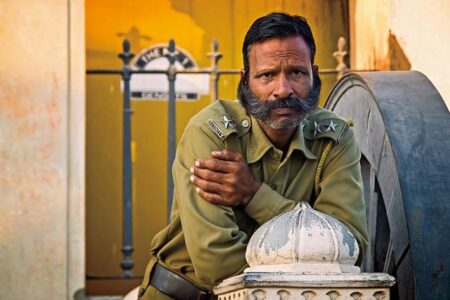Rethinking Female Representation in Cinema: Moving Beyond Stereotypes
How Outmoded Female Stereotypes Shape Audience Views
Despite strides toward gender equality in film, many productions still fall back on antiquated and restrictive female stereotypes that fail to represent the rich diversity of women’s lives. Characters are often confined to simplistic roles such as the helpless damsel, the quirky muse, or the overly sentimental mother, which diminish their complexity and reinforce narrow societal expectations. These portrayals not only limit the scope of female characters but also influence how viewers perceive women’s roles both on and off screen.
This repetitive use of familiar tropes creates a cycle where filmmakers rely on these clichés to meet audience expectations, which in turn normalizes these limited depictions. Below is an overview of some prevalent stereotypes still common in mainstream cinema:
| Stereotype | Defining Characteristics | Effect on Perception |
|---|---|---|
| Helpless Damsel | Dependent, vulnerable, requires rescue | Diminishes female autonomy |
| Quirky Muse | Free-spirited, eccentric, inspires male lead | Reduces women to plot devices |
| Overly Emotional Caregiver | Excessively nurturing, irrational at times | Reinforces caregiving as women’s primary role |
- Innovative storytelling is crucial to dismantle these stereotypes and portray authentic human experiences.
- Creative teams must actively challenge traditional roles to cultivate empowering and realistic female characters.
Deconstructing Harmful Tropes That Oversimplify Women’s On-Screen Identities
Film narratives often rely on reductive devices that strip female characters of their depth and individuality. Tropes like the “quirky muse” who exists solely to motivate a male protagonist, or the “helpless damsel” in need of saving, perpetuate outdated power imbalances and limit the portrayal of women’s full humanity. These clichés overlook the intricate realities of women’s lives, including their ambitions, flaws, and resilience.
Recognizing and moving beyond these limiting archetypes is essential. Common examples include:
- The Ice Queen: Emotionally distant and unapproachable, often punished for showing vulnerability.
- The Seductive Temptress: Valued primarily for physical appeal rather than intellect or personality.
- The Selfless Mother: Defined solely by her nurturing role, often at personal cost.
By rejecting these stereotypes, filmmakers can open the door to richer, more authentic storytelling that honors the complexity of women’s experiences. The table below contrasts typical tropes with more nuanced alternatives:
| Typical Trope | Proposed Alternative |
|---|---|
| Seductress | A layered character with goals beyond appearance |
| Virgin vs. Vixen Binary | A woman with a multifaceted sexuality and autonomy |
| Token Female Sidekick | A fully realized character with her own story arc |
Embracing Diverse Narratives to Challenge Gender Norms in Film
Incorporating a broad spectrum of female experiences in storytelling is vital to breaking down entrenched gender stereotypes in cinema. Films that portray women as leaders, innovators, and complex individuals encourage audiences to reconsider rigid gender roles and embrace a more inclusive understanding of identity. Authentic storytelling fosters empathy and expands cultural perspectives by reflecting the varied realities of women from different backgrounds and communities.
Intentional inclusion of intersectional voices and diverse characters strengthens the impact of representation. Key elements filmmakers should focus on include:
- Agency: Female characters who actively shape their own narratives rather than existing as secondary figures.
- Diversity: Representation across ethnicities, abilities, ages, and socio-economic statuses.
- Complexity: Characters with nuanced strengths, weaknesses, and developmental arcs.
- Authenticity: Realistic portrayals grounded in lived experiences.
| Narrative Element | Effect on Gender Norms |
|---|---|
| Non-traditional roles | Broadens identity possibilities |
| Intersectional characters | Challenges monolithic identity views |
| Complex storylines | Disrupts flat stereotypes |
| Empowering dialogue | Transforms cultural conversations |
Practical Measures for Filmmakers to Foster Genuine Female Characters
Filmmakers hold significant influence in reshaping cinematic narratives by crafting female characters that embody the full spectrum of real women’s experiences and strengths. Prioritizing inclusive storytelling means embracing diversity not only in background but also in age, ambition, and personality. This requires moving away from stereotypical roles that confine women to love interests or one-dimensional figures, instead developing characters with authentic motivations and emotional depth.
Effective strategies include:
- Engaging women writers and directors to bring authentic female perspectives to the creative process.
- Developing female characters with lives beyond romance or family, emphasizing career goals, personal evolution, and complex relationships.
- Challenging conventional beauty ideals and clichés by showcasing diverse body types, ethnicities, and personalities.
- Incorporating nuanced dialogue and character development that reflect genuine psychological and emotional realities.
| Step | Action | Outcome |
|---|---|---|
| 1 | Inclusive writing teams | More authentic female viewpoints |
| 2 | Complex character development | Greater audience connection and empathy |
| 3 | Avoid stereotypical casting and costuming | Enhanced visual diversity and realism |
| 4 | Center women’s agency in the plot | Stronger, relatable protagonists |
Final Thoughts
The persistence of entrenched female stereotypes in film highlights the ongoing struggle for authentic and diverse representation. As viewers grow more discerning and vocal about the portrayals they consume, the call for layered, multifaceted female characters intensifies. It is crucial for filmmakers and studios to consciously move beyond outdated clichés and embrace narratives that genuinely reflect the complexity of women’s lives. Only through deliberate and thoughtful storytelling can cinema evolve into a more inclusive and truthful medium.







